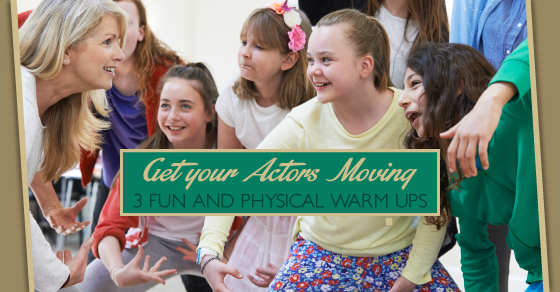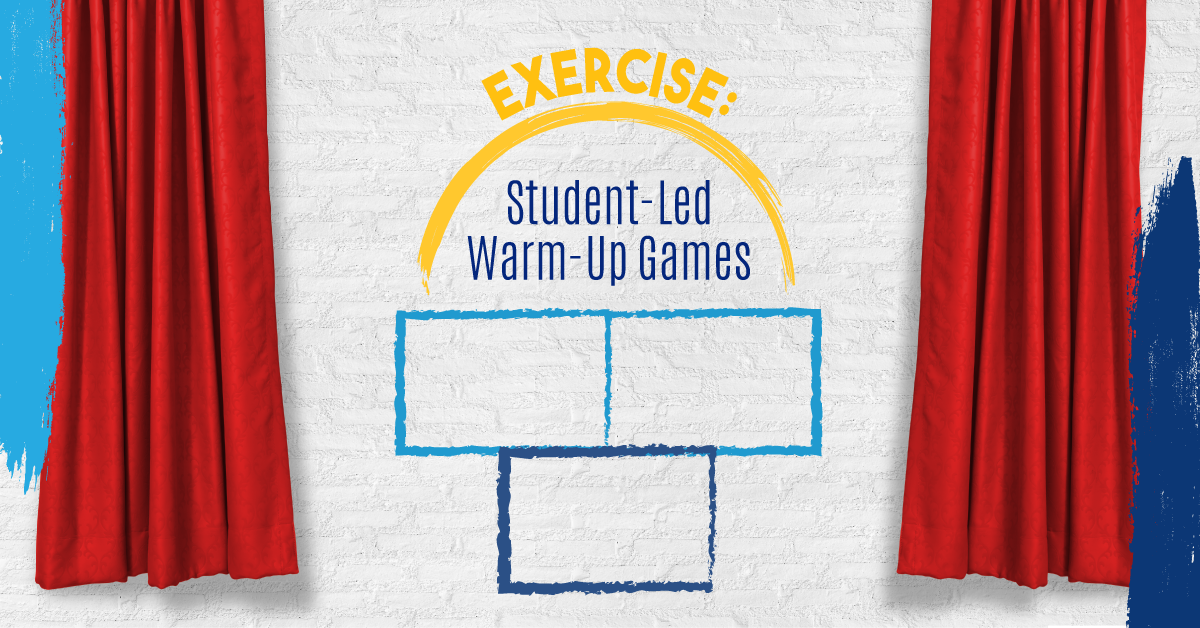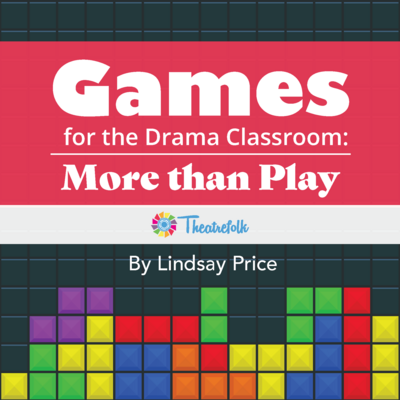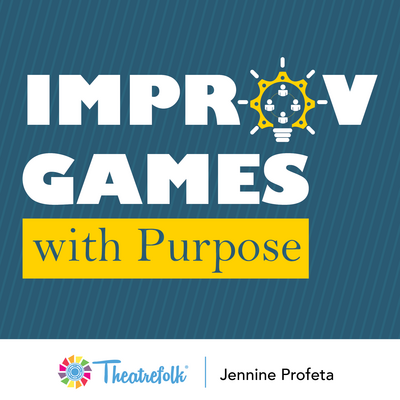Do you have girls who are tired of the same old stereotypes and love something dark and twisted? Camel Dung and Cloves offers rich, eccentric roles with nonstop plot twists that will keep them hooked!
3 Fun, Physical Warm-Ups To Get Your Students Moving
Warm-ups are a great way to get students’ bodies and minds ready for drama class, especially if they have been sitting in other classes all day. Warm-ups get students into the creative mindset necessary for experimentation, risk-taking, and artistic play. Here are three warm-up games that will get your students moving. They’re also great to use in a rehearsal setting before transitioning to blocking, choreography, and character development!
1. Shakedown
This warm-up gets students moving while helping them to learn each other’s names. When you introduce yourself to a new person, you would usually say hello and shake hands. In Shakedown, you introduce yourself, but don’t shake hands.
Choose a Caller (could be the teacher or one of the students) and have your students spread out around the room. The Caller announces a way of moving around the room (creeping, tiptoeing, dancing, leaping, shuffling, crawling, etc.). Have the students move around the room in the manner that the Caller specifies.
When the Caller yells “SHAKEDOWN!” have the students quickly get into pairs with whoever is closest to them at that moment. Have the Caller yell out the name of a body part. The student pairs will introduce themselves to each other (“Hi, I’m Amy.” “Hi, I’m Jonathon.”), then shake the body part announced by the caller and say “Nice to meet you!” It’s going to be hard to keep the giggles at bay when students shake each other by the shoulder, calf, toe, or thumb!
Play multiple rounds. With each round, make sure to move in a different way around the room each time and have the Caller yell out the name of a different body part for the students to shake.
2. Numbered Bodies
You may know this warm up as That Atom Game or Mixer. Numbered Bodies starts the same way as Shakedown–assign a Caller who announces a method of moving around the room. Have the students move around the room in the manner that the caller specifies.
Have the Caller yell out a number and a body part–for example, “THREE ELBOWS!” Students then need to assemble in groups with the correct quantity of body parts touching each other as quickly as possible–in this case, three elbows.
But wait! There are two different methods of assembling body parts. The first way, “The Creative Method,” allows a variety of assembling. For example, for “THREE ELBOWS” you could have three students touch one elbow each; OR you could have two students assemble, with one student using one elbow and the other student using two. The second way, “The Elimination Method,” is stricter. It allows the exact number of people, each one using just one body part. This method is useful if you want to make the warm-up a competition.
This game is played in multiple rounds, with different ways of moving around the room, and various numbers and body parts being assembled–four pinkies, five knees, seven heels, three shoulders, etc. You are only limited by the number of students in your class!
Warning! Be sure that students are not launching themselves at each other when assembling, and do use caution with body parts chosen. (NOTE: This is the reason why I avoid calling “heads” in my classroom, because it always leads to clunked noggins.)
3. Numbered Tableaux
Numbered Tableaux starts the same way as Shakedown and Numbered Bodies. Assign a Caller who announces a method of moving around the room. All the students move around the room in the manner that the Caller specifies.
The Caller calls out a number, and students must assemble themselves into groups of that number with whoever is closest to them. The Caller then announces a simple tableau scene that the students must create within three seconds. Once each tableau is complete, have the students freeze in that position for at least 10 seconds. Next, have the Caller announce a new way of moving around the room and start again with a new number and tableau scene.
Suggestions for simple tableau scenes:
- Scenes from the show your class is currently studying or producing (students get to play all the parts they normally don’t play)
- Scenes from fairy tales and nursery rhymes
- Scenes from famous movies
- Scenes from school (taking a test, playing a sport, doing a science experiment that goes wrong)
- Scenes from life (shopping, going to the beach, running a race, playing with a pet)
Cut out the verb slips, toss them in a bag or hat, and pull out a slip at at random to determine how students will move around the room during a given round.
Related Articles
Games for the Drama Classroom: More Than Play
by Lindsay Price
A collection of games and activities that go well beyond the notion of "play."
Improv Games with Purpose
by Jennine Profeta
Improv games including feedback suggestions and questions, game variations, teaching tips, side coaching tips, entry prompts, exit slip questions, and more!





